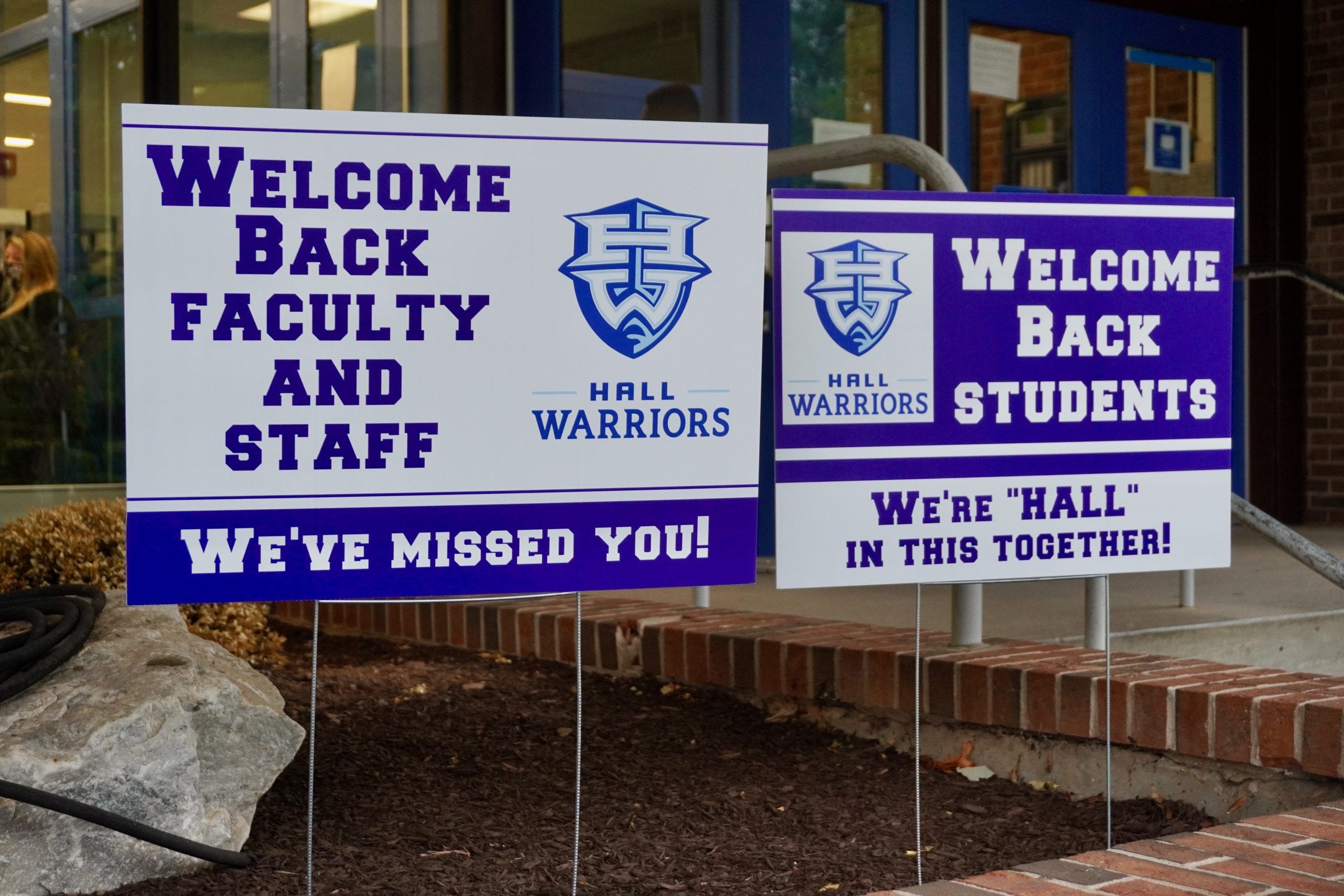Op-Ed: A Student’s Perspective on Hybrid 2.0

Audio By Carbonatix

Hall High School. First day of school in West Hartford, Part 1. Sept. 8, 2020. Photo credit: Ronni Newton (we-ha.com file photo)
Cate Mancini, a junior atHall High School, said she believes it’s important to provide a student perspective about the changes that West Hartford Public Schools plans to implement to its hybrid learning model beginning Nov. 11.
By Cate Mancini
For many middle and high school students, faculty, and parents, the new Hybrid 2.0 plan is more like Hybrid 2.NO.
After only two months of acclimating to the original hybrid plan, they are forced to figure out a new schedule with less than two weeks notice. On Friday, Oct. 30, Superintendent Moore announced a new schedule to replace the current hybrid learning situation in West Hartford, commencing on Nov. 11. Both plans split students based on their last names, creating red and blue cohorts, who alternate weekly between in-person and at home schooling. Under the old plan, at-home students were only required to attend classes in the afternoon, but now they are required to stream morning classes for 5.5 hours.
The Hybrid 2.0 plan is problematic in many ways.
One of the most serious problems is the increase in screen time. During the at-home weeks students will stare at their computer screens for over six hours a day, without even accounting for the hours of homework that must be completed on computers. The Mayo Clinic recommends that the screen time for children ages 2-12 should be one hour a day, and two hours a day for children 12+. This new plan and required screen time exceeds the recommendation for middle and high schoolers by over five and four hours respectively.
With the increase of time per block to 78 minutes, students at home and online may struggle with staying focused and attentive. Because of COVID-19, both in person and online classes are not interactive and small groups are not possible. Many teachers plan to leave a camera in the front of the room so virtual students can watch class while the teacher continues to only interact with the students in class. These techniques create an unnatural flow of learning and they isolate online students from participating
And that is if the technology works. The Hybrid 2.0 plan relies greatly on technology, something that not everyone has reliable access to. Being on a Google Meet for many consecutive hours requires a strong WiFi connection. Those students without access are disadvantaged, with little time to find other solutions. Streaming classes also requires a steady and strong connection on the part of WHPS, which the teachers struggled with when classes were only 30 minutes.
If the technology works, there is still the problem of a time for a break that could be used for lunch or snack, which the Hybrid 2.0 plan doesn’t provide. To expect students to go from 7:30 a.m.-1 p.m. without any food is unacceptable and overlooks mental and physical health concerns. The additional work, required presence for longer amounts of time, and stress from changes in daily routine can diminish students’ mental health. Headaches, eye strain, and fatigue are some of the physical effects that students will experience. The Hybrid 2.0 does not prioritize student well being.
With the release of the Hybrid 2.0 schedule, students voiced their concerns and opinions. They, along with teachers who had only 10 days between notification and implementation, advocated for themselves and their beliefs.
Students sent emails, created petitions, and testified at the Board of Education meeting. However the only response to students was an email from each principal, taking the concerns people wrote and disputing them. To see this kind of advocacy from students demonstrates how much people care about the impact of this plan, and to have all their concerns barely acknowledged is appalling.
Hybrid 2.0 doesn’t have to be 2.NO. There are many possible solutions, like adding a break time where students could have a snack, having teachers record their classes and post them on Google Classroom for more flexibility, or requiring streaming of only half of the morning classes. I implore the superintendent to listen to input from people affected by this schedule and modify this plan for the better.
Cate Mancini is a junior at Hall High School in West Hartford.
We-Ha.com will accept Op-Ed submissions from members of the community. We reserve the right to edit all submitted content.
Like what you see here? Click here to subscribe to We-Ha’s newsletter so you’ll always be in the know about what’s happening in West Hartford! Click the blue button below to become a supporter of We-Ha.com and our efforts to continue producing quality journalism.



